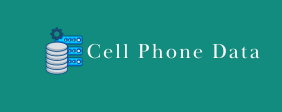Before you even pick up the phone, gathering and analyzing data about your prospects is paramount. This initial research phase informs your entire cold calling strategy.
Company-Level Data: Understanding the Landscape
Delving into a company’s profile provides crucial context for your pitch. Key data points include:
- Industry and Sector: What are the prevailing trends and challenges within their industry? This helps you speak their language and address relevant pain points.
- Company Size and Revenue: This indicates their operational scale and potential budget, helping you qualify the lead and position your solution appropriately.
- Recent News and Developments: Has the company recently secured funding, launched a new product, or made significant hires? These “trigger events” provide immediate, relevant talking points and demonstrate your informed approach.
- Technology Stack (Tech Stack): Knowing the software and platforms they currently use can help you identify integration opportunities or highlight how your solution complements or replaces existing tools.
Individual-Level Data: Personalizing Your Approach
Beyond the company, understanding the individual you’re calling is critical for building rapport and relevance.
- Job Title and Responsibilities: What are their daily challenges and priorities? How does your solution directly impact their role?
- Professional History and Achievements: LinkedIn is a goldmine here. Look for shared connections, past roles, or notable achievements that you can reference to establish common ground.
- Recent Activity (Social Media, Content Engagement): Have they recently posted on LinkedIn about a specific industry challenge? Did they download a whitepaper from your website? This behavioral data provides powerful insights into their interests and pain points, allowing for hyper-personalized openers.
Optimizing Your Outreach: Data-Driven Strategies in Action
Once you’ve gathered your data, it’s phone number data time to put it into action to refine your cold calling tactics.
Best Time to Call: Hitting the Sweet Spot
Timing is everything in cold calling. Data analysis of past calls can reveal optimal calling windows.
- Day of the Week: Studies often show Wednesdays and Tuesdays to have higher connection rates. Fridays and Mondays, especially afternoons, tend to be less effective.
- Time of Day: Mid-morning (10 AM – 12 PM) and late afternoon (4 PM – 5 PM) are frequently cited as prime the evolving landscape of outbound sales calling times, as prospects have settled into their day or are winding down. Avoid lunch hours (12 PM – 2 PM) and early mornings.
Scripting and Messaging: Tailoring for Impact
Data helps you move beyond generic scripts to highly targeted messages.
- Personalized Openers: Instead of “Is this a good time?”, try referencing a recent industry event or a specific lack data challenge you know their company or role faces. For example, “I saw that [Company Name] recently [news event], and I thought of you because [your solution] helps address [related challenge].”
- Pain Point Identification: Based on your research, anticipate their likely pain points and frame your value proposition as a direct solution.
- Objection Handling: Analyze past call recordings to identify common objections and develop data-backed responses that address those concerns effectively.
Continuous Improvement: The Feedback Loop of Data
The insights don’t stop once the call is made. Ongoing data analysis is crucial for refining your cold calling process.
Call Analytics and Performance Metrics
- Connection Rates: How many calls result in a live conversation?
- Conversation Duration: Are your calls long enough to engage prospects, but not so long that you lose their interest?
- Meeting Booked Rate/Conversion Rate: The ultimate measure of success – how many calls lead to a next step?
- Objection Patterns: Which objections are most frequent, and how well are they being handled?
By consistently tracking these metrics and analyzing trends, you can identify what’s working, what’s not, and where to focus your training and strategy adjustments. Data-driven cold calling isn’t about eliminating the human element; it’s about empowering your sales team with the intelligence needed to have more meaningful, productive conversations, ultimately leading to greater sales success.
